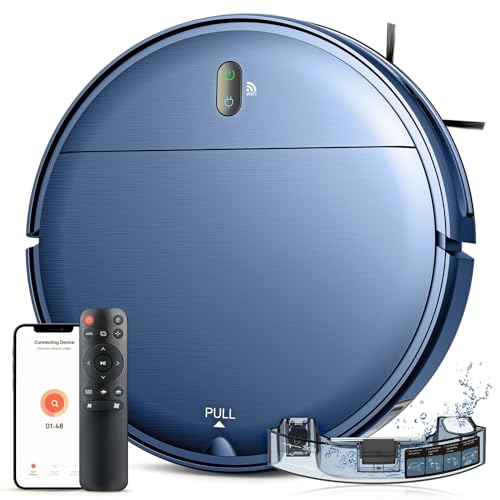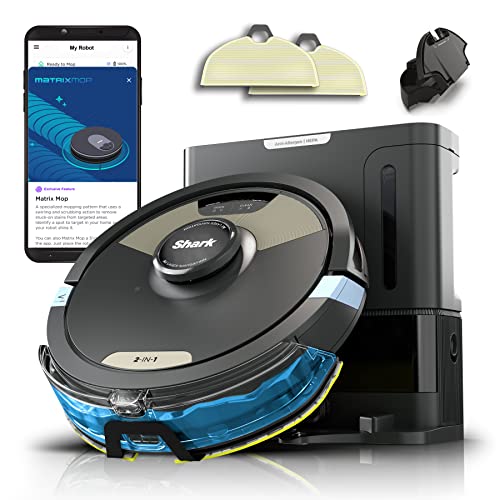The Best Robot Vacuum 2023
Robot vacuums can make cleaning your floors a breeze. The best ones can remove tracked-in dirt, crumbs and shed pet hair, and more.
 Although they’re unable to do the same job as a regular vacuum but they’ve come quite a way in recent years. They’re smarter, more powerful and (marginally) better in avoiding the legs of chairs.
Although they’re unable to do the same job as a regular vacuum but they’ve come quite a way in recent years. They’re smarter, more powerful and (marginally) better in avoiding the legs of chairs.
Smart Mapping
Utilizing navigational tools like lasers and sensors, robotic vacuum cleaners work their way around your home, suctioning pet hair, crumbs and dirt from their dustbins. They can be found on hard floors such as laminate, wood and tile, as well as carpets and area rugs with low pile. The most advanced robots can map your house, so they can recall where they’ve been and avoid hitting obstacles like sofas, chairs and bookshelves you might want to keep out of your way. You can also use the smartphone app to set up zones that prohibit your top 10 robot vacuums robot vacuum cleaner (Recommended Website) to stay out of rooms it doesn’t want to clean.
Robots that have advanced mapping capabilities, such as the Roomba j7, utilize onboard cameras and processor-powered smarts to avoid obstacles and see them. This means you can let the robot to perform an efficient cleaning without having to constantly monitor the state of your floorplan or manually move obstacles out of the robot’s path. The TP Link Tapo RV30 Plus is a robot that combines mopping with vacuuming. It’s a one-stop solution to keep your home clean. It has great suction and works with Alexa and Google Assistant. It also comes with a handy self-emptying feature that can be used as security cameras.
Roborock Q Revo, a cheaper robot that vacuums, mop and functions as an automated trashcan is a great option for homes that don’t have the need for more advanced features. However, it has some disadvantages in comparison to the Roomba J7 and S8. For one, it has a single rubber brush instead of the dual roller brushes that the other models have, so it might not be as effective in picking up larger debris such as shoes and socks. It doesn’t have AI obstacle avoidance, so you might need to get rid of the clutter prior to running.
 The iLife A4s Pro is a basic robot that is ideal for those who prefer simplicity and competence. It’s less than $200 and offers consistent, solid suction on hardwood and low-pile carpets and also avoids tangles caused by rug threads. It’s not a lot of technology however, it’s effective. It also works with voice commands. You can set it up to run a program, or create no-go zones using the app.
The iLife A4s Pro is a basic robot that is ideal for those who prefer simplicity and competence. It’s less than $200 and offers consistent, solid suction on hardwood and low-pile carpets and also avoids tangles caused by rug threads. It’s not a lot of technology however, it’s effective. It also works with voice commands. You can set it up to run a program, or create no-go zones using the app.
Object Detection
Object-avoidance technology can affect the ability of a robot vacuum to navigate around your home. Some models on our list include sensors (or even cameras) that help your robo-cleaner avoid common traps for robots, such as cords, toys for children and pet mess. iRobot Roomba J7 is one of the most impressive examples of smart technology in action, is a great example. It also has a stylish clean base that empties the dustbin automatically so you don’t have to.
In our testing, we set this robotic cleaner up in a huge house and were awed by how quickly and efficiently it cleaned up floors without getting sluggish. It is very maneuverable and can reach places that the majority of stand-up vacuums are unable to reach, like under couches and under beds. It also has excellent suction, a massive 500-milliliter dustbin and over two hours of runtime. It isn’t able to set up no-go zones and its recognition of objects is a bit iffy. We saw it crashing into objects on occasion during our tests, resulting in some vase caps falling over.
It’s important to keep in mind that despite how smart the robot vacuum might appear it will not replace your traditional canister or upright vacuum. It’s not able to deal with heavy dirty carpets, it can’t get into every crevice and won’t be able to reach your ceilings or other difficult to reach areas. But for keeping your floors clear of crumbs, pet hair and other dander it’s an ideal addition to your cleaning routine.
Most robot vacuums come with sensor systems that help them navigate around obstacles and stairs. They can tell when they are about to fall down the stairs, for instance and also detect cluttered spaces and move around them. If you’re not careful, your robot cleaner could be stuck on a cord, shoe or another object.
Some robot vacuums come with mapping capabilities that permit them to draw an accurate floor plan of your home and pinpoint themselves. This lets them know what areas they’ve cleaned before and avoid wasting time going over the same spots. This lets them resume where they left off, should they need to return to the charging dock.
Self-Emptying
A robot vacuum that automatically empty its dust bin once it is full is a wonderful convenience. Certain models come with windows that allow you to observe when the bin has to be empty. This feature is ideal for those who have children or pets, who are likely to create much more mess than adults.
Most robot vacuums let you select whether the machine is controlled via a remote control, an app for your smartphone, or by voice commands. They come with a variety of digital features including scheduling and maintenance tips. You can program your robot to clean your house on every week or on a regular basis using the correct settings. You can also program it to clean specific areas of your home.
Some of the smartest robot vacuums we’ve tested come with built-in cameras as well as smart sensor technology that allows them to create maps of your home. You can save these maps to the robot’s app to quickly navigate around your home. Some of these systems even remember furniture placement and note the transitions from hard floors to carpet.
Smart vacuums can save you time by mapping and cleaning entire homes in a timely manner and keeping detailed records of the previous cleaning sessions. You can access these records through an app on your smartphone or tablet. Most can also connect to your smart speaker, so you can control them using voice commands.
TP-Link Tapo RV30+ is self-emptying robotic that delivers outstanding performance for a reasonable price. It can clean floors and sweep up pet hair and other messes from low-pile and hardwood rugs. It’s not as advanced as the other robots we’ve reviewed, however it does its job very well.
The model’s tanks-like wheels allow it to roll over obstacles such as cords that get caught up and high transitions within rooms. It also comes with a large dust bin that doesn’t require to be emptying manually, and it’s also able to recharge and resume cleaning if it’s power-depleted. It’s a bit more expensive than other robotic vacuums we’ve tested, but it blends powerful suction and simple controls to give you a good value.
Voice Control
Most robot vacuums are controlled by a remote control or an app on a smartphone. Some models can also be integrated with smart speakers such as Amazon Echo or Google Home, allowing you to control them using voice commands. This is a great option if you have small pets or children who might hinder your cleaning, or shorl.com if you’re too tired to operate the robot manually.
Most models have an automatic mode that operates without your input. Simply press a button on the robot or within the app, and it will start sucking up dirt, food crumbs, and pet hair. The robots can be programmed to clean in accordance with a schedule, making them ideal for those who simply need to make a plan and forget.
Some of the more expensive models have a feature that makes use of artificial intelligence to detect and scan obstacles in your home. These models can recognize things such as power cords, stairs as well as furniture, and even distinguish between different types of flooring. This helps robots avoid hazards. This is particularly useful in large homes that have lots of carpeting and other flooring coverings that are difficult for robots to navigate.
Other robots are less sophisticated in their ability to detect objects, but they still get the job done. The TP-Link Tapo RV30 Plus, for example is similar to a wifi router but offers the performance of a high-end bot. It is extremely suction-driven and handles dirt and debris from hardwood floors and rugs with medium pile easily. Its short and squat side brush is less likely to be stuck in cords or shoes. The hybrid roller brush, which is made up of bristles as well as plastic, provides a thorough cleaning.
This model is more expensive than other models in the mid-range, but it does everything you would expect from a robot vacuum and mop. It can draw out the cleaning schedule and then create one. It also has virtual zones that you can stay clear of. It doesn’t offer the same room-scanning and obstacles-avoiding features as the j7 or s8.
